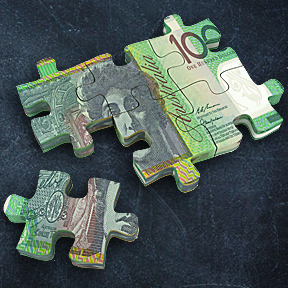Loans and leases
If your business doesn’t have the capital to implement an energy efficiency upgrade, traditional finance options like a loan or lease can help you get started. Better still, the post-upgrade savings from your energy bills can help service the cost of the loan or lease.
As this book shows, the efficiency of equipment is always improving. This is where leasing has its advantages. It enables you to upgrade your equipment as more efficient alternatives become available. The other advantages and disadvantages of leasing are covered below.
Advantages and disadvantages of lease agreements
| Option |
Description |
Advantages |
Disadvantages |
| OPERATING LEASE |
- The equipment is owned by the financier and the customer obtains the sole right to use it.
- The customer pays regular lease payments to financier and pays all maintenance costs.
- At the end of the lease, the customer has the option of returning the equipment, making an offer to buy it, or continuing to lease it.
|
- No or reduced up-front cost.
- Limited collateral required (other than the asset).
- Leasing costs are tax deductable.
- Fixed lease payments.
- Lease obligation is off- balance sheet.Financier bears ‘residual value risk’ (i.e. risk that the equipment has no value at the end of the lease).
- Particularly suitable where equipment has perceived high obsolescence or is required for a short period.
|
- Customer bears the risk of the equipment becoming unusable during the lease.
- Customer cannot depreciate the asset.
- More suitable for capital intensive projects and where costs are mainly for physical assets.
- Less suitable for less expensive equipment, such as lighting, or when a large portion of costs are for installation and associated services.
- Less suitable when equipment is difficult to remove or reuse.
|
| CAPITAL LEASE |
- Same as operating lease, except that at the end of the lease, equipment ownership transfers to the customer on payment of an agreed amount.
|
- No or reduced up-front cost.
- Fixed lease payments.
- Customer depreciates the equipment.
- Interest component of repayments are tax deductible.
|
- The lease obligation appears on the balance sheet.
- Customer bears the economic risk of the equipment becoming unusable, including the ‘residual risk’.
- As for operating lease, more suitable for capital intensive projects and where costs are predominantly for physical assets.
|
“If it appreciates in value, buy it. If it depreciates in value, lease it.”
| Option |
Description |
Advantages |
Disadvantages |
| SELF FUNDED |
- Energy efficiency or renewables project is financed with own funds from capital budget.
|
- No external obligations to financiers.
- Business owns and can depreciate the equipment.
|
- Must meet the company’s minimum acceptable rate of return on capital (also referred to as the project hurdle rate).
- Less capital available for investment in core business activities.
- Business carries all finance and performance risks.
|
| COMMERCIAL LOAN |
- A lender provides capital to a borrower, to be repaid by a certain date, typically at a predetermined interest rate that moves in line with changes in a reference lending rate.
- Customer makes regular repayments to lender to cover interest costs. Capital repayments can be bundled with interest payments, or can occur at the end of the loan.
|
- No or reduced up-front cost.
- Interest and depreciation of energy efficient equipment are tax deductable.
|
- Customer bears the economic and technical risk if the equipment becomes unusable.
- Customer could be required to provide security, such as a lien on property or other assets, or guarantees from parent companies, another financier or owners.
- Loan is on the balance sheet.
|
| ENERGY EFFICIENT LOAN |
- A loan available only for energy efficiency and renewables projects.
|
- No or reduced up-front cost.
- Interest and depreciation of new equipment is tax deductable.
- In addition, these loans are specifically designed for energy efficiency and renewable energy projects, so generally have lower interest rates and longer finance periods.
|
- Customer bears the economic and technical risk if the equipment becomes unusable.
- Customer could be required to provide security, such as a lien on property or other assets, or guarantees from parent companies, another financier or owners.
- Loan is on the balance sheet.
- Few financiers offer this type of loan product.
|


